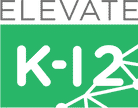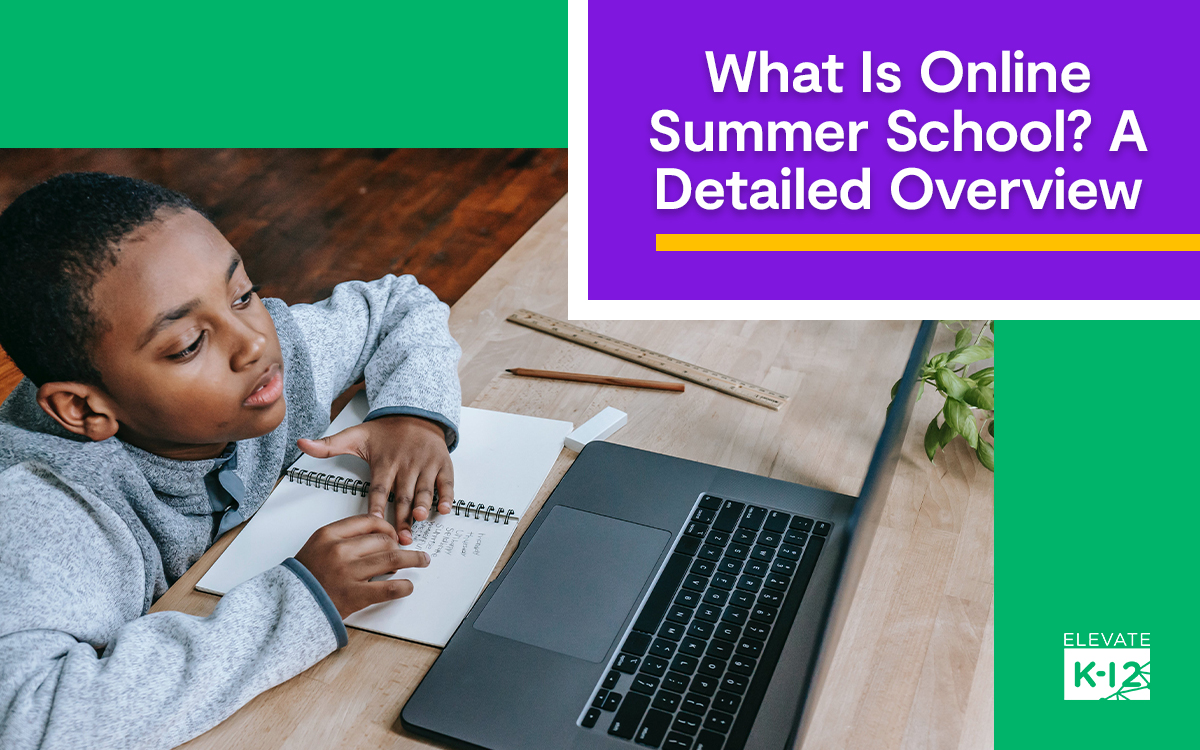The COVID-19 pandemic brought a significant shift in education, as 83% of public schools transitioned to online distance learning in 2020. While most regular programs have since resumed in-person learning, many students choose online summer school programs over in-person options, as the former offers more flexibility. Learners can catch up on their credits, take electives, or get ahead of their peers without losing their summer.
Still, some parents and school district executives approach online summer school programs cautiously, typically because they’re relatively new. To help give you a complete picture of these programs, we’ll take an in-depth look at how they work, their advantages and challenges, and how to elevate them.
What Is Online Summer School?
Online summer school is a virtual academic program offered during the summer months when regular school programs are closed. It allows students to access educational materials, interact with instructors, and complete assignments online to compensate for lost credits or earn additional credits. Depending on the program, it can include video lectures, group discussions, reading assignments, and tests.
There’s a growing popularity among K-12 students as it allows them to learn from anywhere. They can learn while enjoying family vacations or working summer jobs, sometimes at their own pace.
How Does Online Summer School Work?
Online summer school differs from traditional schooling in terms of technologies, curriculum, and student-teacher interaction. While each summer session is different, there are several standard factors, including:
- Technology: Facilitators often offer online summer school courses through Learning Management Systems (LMS), allowing students to access vital learning materials on a centralized platform.
- Curriculum: Online summer school typically facilitates self-paced learning, allowing students to review course materials at their own speed.
- Student-teacher interaction: Some programs run online office hours, when students can consult with teachers through videoconferencing, emailing, or messaging systems.
Asynchronous vs. Synchronous vs. LIVE Summer School
Online summer schools can fall into two main categories — asynchronous and synchronous. Asynchronous online summer schools allow students to access learning materials at different times — classes are not held at a specific time, so learners can set their own study schedules.
Synchronous online summer schools operate a lot like traditional in-person schools, with direct teacher-student interactions and set schedules. LIVE teaching interactions enhance the learning experience by allowing students to seek clarifications and ask questions in real time. Further, the set schedule is vital for middle school and high school students, as they often need guidance on effective time management.
However, online summer school, whether asynchronous or synchronous, may not be the ideal choice for some school districts because it does have some distinct cons that may impact student learning.
If your district cannot support a fully in-person summer program, LIVE streamed in-classroom summer school is the next best thing to in-person teaching. With LIVE summer school, students get the in-classroom experience they are used to, so learning isn’t disrupted. Your schools can utilize it to address hard-to-fill summer school teaching positions or expand their summer school course selections so students can pursue their passions and interests.
The Benefits of Typical Online Summer School
Online summer school can be beneficial for learners at all grade levels. Here are some benefits your students may enjoy:
Convenience
One of the most significant drawbacks of traditional in-person summer learning is that it requires students to be physically present in school. This is a deterrent for learners who want to spend their summers with family or work.
Online summer school is more convenient as it doesn’t require physical presence. Its accessibility enables students to learn from anywhere, so they can travel, work, or keep whichever plans they have for their summer breaks.
Enhanced Student Learning Opportunities
Synchronous online summer school supports numerous forms of learning, allowing teachers to personalize lessons for different learners. Students can learn through videos, interactive discussion boards, digital textbooks, and even simulations. Tailored learning experiences can improve students’ learning outcomes.
Continuous Academic Engagement
The summer slide — learning loss that occurs during the summer — is a huge problem for school districts, with some students losing up to a month of academic gains over the break. Online summer school allows parents and districts to prevent the slide by maintaining academic momentum during school breaks. This way, rather than spend weeks trying to recover what learners forget, teachers can move forward with regular teaching in the next school year.
The Drawbacks of Typical Online Summer School
While highly beneficial for learners, online summer school has some drawbacks. Understanding them will help you see why your district may benefit from LIVE teaching for your summer school sessions instead. Here are some concerns you should know:
Student Motivation
Some students face difficulty adapting to online classes because of the lack of a structured school routine, distractions at home, and a perceived lack of urgency regarding summer coursework. This can affect their motivation to learn, impacting outcomes.
To boost motivation, opt for one-on-one LIVE classes instead of online summer school. This makes it easier for teachers to gauge when students are unmotivated and offer solutions. Also, set realistic goals for each student’s learning progress and establish a routine to keep them on track.
Limited Feedback
Online summer school courses may still fall short of providing the immediate, personalized feedback that occurs in a physical classroom setting, affecting learning outcomes.
Choosing a LIVE online teaching method, like Elevate K-12, can facilitate more timely feedback by allowing students to seek clarifications as they would in a typical in-person classroom.
Less Adaptability
This drawback is common in asynchronous classrooms. Teachers are unable to adapt their teaching styles to suit students’ needs because of their limited interactions.
You can manage this drawback by choosing LIVE teaching sessions instead — teachers can easily determine students’ preferred learning styles and tailor their teaching strategies to meet their needs.
Less Social Interaction
Online summer school lacks the rich social interactions found in traditional classrooms, as students typically log into their learning platforms at varying times. This can impact students’ social learning and engagement with peers, impeding the progress of those who learn best when collaborating with others.
LIVE teaching is an excellent alternative to ensure the students still get their peer interaction time, even without a traditional teaching setting. Teachers can hold discussions that encourage student-student collaboration just like in a regular classroom.
Fewer Opportunities for Hands-on Activities
Subjects that benefit from hands-on experiences, like art and science, can be challenging to replicate effectively in an all-online format. For example, engaging students in sessions involving frog dissections can prove challenging.
When handling such subjects or topics, encourage teachers to use detailed visual demonstrations. They can use multiple camera angles to provide a comprehensive view of their processes.
With LIVE teaching through Elevate-K12, students can also enjoy a more traditional feel, allowing students to be together in the classroom while the LIVE teacher facilitates projects and assignments.
How Elevate K-12 Can Help Make LIVE Summer School Better
The key to providing a great summer school experience is finding the right partners. Elevate K-12 helps numerous school districts nationwide improve learning outcomes throughout the academic year by providing certified teachers. Here are ways we can enhance the summer school experience:
Interactive Real-time Classes
Elevate K-12 offers real-time classes, facilitating interactions between students and teachers. This helps overcome two drawbacks of regular online summer school — limited feedback and social interactions. Your students can seek clarifications, ask questions, and interact with each other like they would in in-person summer classes.
Personalized Learning Experiences
At Elevate K-12, teachers tailor teaching methods to suit individual learning styles and needs, providing a more individualized and effective learning experience than standard online summer courses. Our teachers are all accredited and undergo rigorous training to prepare them for LIVE classes. They regularly give formative assessments to gauge students’ comprehension and use the insights to adjust teaching strategies to ensure all learners have an enriching experience.
More Student Engagement
The interactive nature of Elevate K-12’s LIVE classes keeps students more engaged and motivated compared to asynchronous learning or all online learning through interactive discussions and activities. Through the Elevate LIVE portal, students can easily raise their hands, ask and answer questions, and talk to their teachers in real time, promoting engagement.
Technology Integration
Elevate K-12 integrates advanced technology into the teaching process to facilitate learning enrichment. We equip all our classes with cameras to allow the teachers to see students and microphones and speakers to ensure they can hear each other. This way, learning occurs like it would in person.
We’ve partnered with Otus to integrate our LIVE learning platform with a grading and assessment system that gives teachers immediate insights into students’ comprehension.
To facilitate a smooth learning experience, we have a dedicated support team that mitigates technical issues. Rest assured, nothing will interfere with your summer sessions.
Strong Learning Community
Elevate K-12 fosters student cooperation, replicating the community aspect of traditional classroom environments. Learners can hold discussions with each other in the classroom under the guidance of the Classroom Coach, facilitating collaboration.
Our teachers regularly meet with their assigned Classroom Coaches to review course catalogs and teaching plans, ensuring they’re on the same page. This means you never have to worry about students being led in different directions.
Explore the Possibilities of More Effective Summer School With Elevate K-12
Online summer school is quickly becoming a top choice for students, parents, and school districts, as it’s convenient and helps prevent learning loss. Still, it presents challenges like limited feedback, social interactions, and student motivation.
Elevate K-12 addresses the challenges of traditional online classes by facilitating real-time student and teacher interactions, creating personalized learning experiences, and fostering a sense of community. With Elevate instruction, your students can enjoy a more enriching experience, regardless of their reason for taking summer classes.
Ready to enhance your summer learning? Get in touch with Elevate K-12 today!

